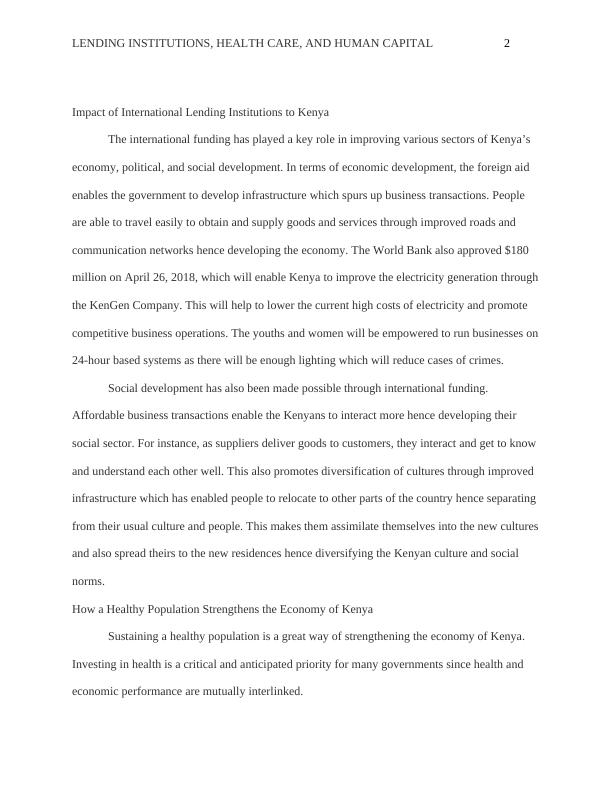Lending Institutions, Health Care, and Human Capital
6 Pages1579 Words374 Views
Added on 2023-06-11
About This Document
This article discusses the impact of international lending institutions to Kenya, how a healthy population strengthens the economy of Kenya, and how the leadership of Kenya has used foreign aid to improve its health care system. It also highlights the benefits of international funding in terms of economic and social development, increased productivity, reduced mortality rates, improving technology, and reduced crime rates.
Lending Institutions, Health Care, and Human Capital
Added on 2023-06-11
ShareRelated Documents
End of preview
Want to access all the pages? Upload your documents or become a member.
Role of Lending Institutions in Developing Countries assignment
|5
|1050
|28
Affordable and Safe Drinking Water in Kenya Report 2022
|9
|2651
|27
Obesity in North Coast Assignment
|11
|2241
|18
Foreign Health Aid: Positive and Negative Impacts on Recipient Countries
|9
|2888
|280
Health in New Zealand
|9
|2019
|415
Youth Policy and Program Case Study
|8
|2040
|312



